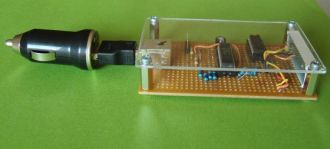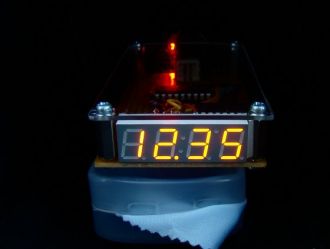
We strongly encourage users to use Package manager for sharing their code on Libstock website, because it boosts your efficiency and leaves the end user with no room for error. [more info]

Rating:
Author: Rajendra Bhatt
Last Updated: 2016-02-21
Package Version: 1.0.0.0
Category: Measurement
Downloaded: 2456 times
Followed by: 1 user
License: MIT license
This project is about making a simple electronic voltage monitor system for car’s battery and its charging system. It plugs into the car’s cigarette lighter receptacle and displays the instantaneous output voltage across the battery terminals on a 4-digit seven segment LED display.
Do you want to subscribe in order to receive notifications regarding "Car's battery voltage and charging system monitor" changes.
Do you want to unsubscribe in order to stop receiving notifications regarding "Car's battery voltage and charging system monitor" changes.
Do you want to report abuse regarding "Car's battery voltage and charging system monitor".
| DOWNLOAD LINK | RELATED COMPILER | CONTAINS |
|---|---|---|
| 1317149294_car_s_battery_vo_mikroc_pic.zip [151.11KB] | mikroC PRO for PIC |
|
This project is simply about making a precise digital
voltmeter that plugs in to a car’s cigarette lighter receptacle and
displays the instantaneous voltage across the battery terminals. When
the engine is turned off, the voltage measured by this device is the
actual output voltage from the battery. However, if the engine is on or
the car is running, it actually measures the charging voltage across the
battery that is coming from the car’s charging system (alternator +
rectifier). The functional block diagram of this project is shown below.

For simplicity, I used my spare USB car charger to provide +5V power supply to the circuit. The USB port has 4 pins (+5 V, D+, D-, and Gnd). In the car charger, the D+ and D- pins are kind of useless. So I opened my USB car charger, disconnected the outpu
View full imageThe firmware for this project was developed in mikroC Pro for PIC compiler. The use of internal reference voltage for A/D conversion requires configuration of FVRCON and ADCON1 registers. The mikroC Pro for PIC compiler provides a library for A/D conversion, but that uses the supply voltage, VDD
, by default as the positive reference for the conversion. So the
built-in ADC library of mikroC Pro for PIC is not useful for our case
and we need to write our own ADC subroutine. The complete source code
for this project is provided in the attached file.
